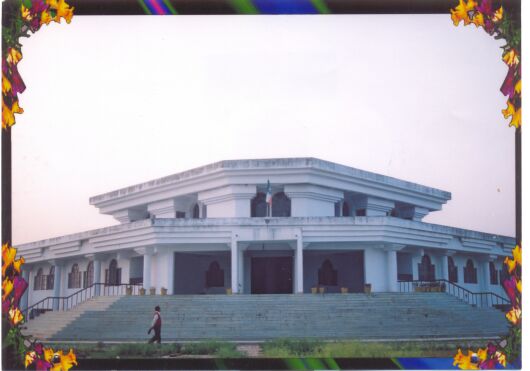![]()
List of Judicial Officers presently posted
 |
General Introduction: Siddharthnagar District was created on 29th December, 1988 in the name of Prince Siddharth, the childhood name of Mahatama Gautam Budha, who showed the world a path of salvation and taught and non-voilence and known as founder of Budha Dharma. Kapilvastu the capital of his father's kingdom lies in this District at the distance of 18 Km, from the District headquarter. Several incidents relating to life of Lord Buddha happened in this area. The ruins and dilapidated palaces of Buddha Bihars have also been found in this area. Lumbani, the birth place of Mahatama Budha is situated in north of the District in Nepal state.
Boundaries and Area: The District of Siddharthnagar lies in eastern portion of Uttar Pradesh in between 27° 7’ to 27° 3’ North latitude and 82° 1’ to 83° 8’ East longitude and forms a part of Basti Division. It is bounded on the North by Nepal country, South by District Sant Kabir Nagar, East by District Maharajganj and on the West by the territories of District Balrampur.
Its geographical shape is like a bowl with a lenth of 65 Kms. North to South having the total area of 2956 Sq. Kms, which is about 1.2% of the total area of U.P.
In Pre-independence period the Judicial Courts consisted of those of the District and Sessions Judge, Gorakhpur whose Jurisdiction extended to Munsafi, Bansi later on in 1866, a separate Sessions Division Basti was created comprising the area of this Sessions Division.
Before creation of the District 3 Courts namely Munsif, 1st Addl. Munsif and 2nd Addl. Munsif were functioning at Bansi and 2 Courts namely Munsif were functioning at Naugarh, which is the present headquarter of the District.
In the Year 1989, the District and Sessions Court, Siddharthnagar was created from the Jurisdiction of the District and Sessions Court, Basti and began to function as a separate Judgeship from March 30, 1990 consisting of the area of out lying Court of Munsafi Bansi.
Buildings (Non-residential): The Judiciary of the District started its function in the Munsif Court's premises Naugarh on 30th March, 1990. The Courts of Magistrates and Civil Judge were established in a rented building situated at Uska Road.
There-after the Government allotted 25 acres land for construction of non-residential buildings. Out of 25 acres, only 17.7 acres land came into possession of the District Judiciary over which the accommodation for 27 Court rooms was to be constructed by U.P. Government in 3 phases, the 1st phase consisting of 11 Courts rooms, the 2nd phase consisting of 8 Courts room and in the 3rd phase 8 Court rooms were to be constructed. At present construction of 1st phase consisting of 11 Court rooms and offices is about to complete. Keeping in view the paucity of accommodation of Courts, the Courts were established in new court building after its inauguration on 09-12-2000 by Hon'ble Justice A.K. Yog the then Administrative Judge of this Judgeship.
Buildings (Residential): The U.P. Government has accepted the proposal for construction of the following residential buildings.
District Judge, Residence.
Type-IV - 10
Type-III - 12
Type-II - 50
Type-I - 50
Criminal Justice: The Sessions Court enjoys the power to try the Sessions Trials committed by the Criminal Courts. In addition to Sessions Courts, two Additional Sessions Courts, two Fast Track Courts are in existence, on special Court, for trying the cases relating to atrocities on schedule Cast and Scheduled Tribes is also functioning.
There are Courts of Chief Judicial Magistrate and two Judicial Magistrates to deal in Criminal Case including one Court of Judicial Magistrate at Out lying Court Bansi.
Civil Justice: The Court of District Judge enjoys the power of hearing appeal against the judgments of Civil Judges. There are two Courts Additional District Judges in addition to the Court of District Judge.
The Courts of Civil Judges (S.D.) and Civil Judge (J.D.)'s are parent Courts of Civil Case depending on the Valuation of Cases. There are two Additional Civil Judge (J.D.)'s Courts in addition to above Court including one Court of Additional Civil Judge at Bansi.

|
|